Imari style patterns are a tableware classic, featuring bold tones of deep orange and cobalt blue. Bittersweet by Royal Cauldon combines the colours of Imari with an all-over-chintz pattern, featuring extra highlights of teal and apple green with touches of gold on sturdy ironstone. The result is beautiful and durable. A great combination.
Royal Cauldon (which auto-corrupt keeps changing to “Royal Cauldron”) has an interesting history. I did a bit of digging around to try and date the Bittersweet pattern, and it seems it was made between 1930 and 1962, according to www.thepotteries.org.
You will note on the backstamp that Royal Cauldon claims 1774 its year of establishment. This is a bit of a stretch, but in keeping with the common practice of potters to grasp at straws (or fragments of pottery found at the site they were currently occupying) in an effort to establish longevity as a mark of stability. Previous owners of the Cauldon works (Brown-Westhead, Moore & Co) were “Potters to Her Majesty”, which is where the crown came from, and was the reason Royal was affixed to the Cauldon name after 1930.
The owners of Royal Cauldon went even further in their “fake news” history after another business reorganization in 1962. Goods produced after 1945 claim to be “Made by England’s Oldest Pottery Established in 1652”. It appears there is an inverse relationship between the date of establishment and the age of the actual pottery produced. And we think obfuscation is a modern thing 🙂
The Potteries.org fills us in:
“Pountney & Co. Ltd. of Bristol took over the business of Cauldon Potteries Ltd. and incorporated the business into their existing factories at Bristol. In the same way that Cauldon Potteries Ltd used “est 1774” – even though it was not true; Pountney claimed to be able to trace their Bristol factory origins back to 1652. They did not start to use the “Est 1652” claim until c.1945.
The fact of the matter is that some pottery fragments were found which bore the date 1652 and 1653 – these fragments were evidence of a previous works which had been built over and was later occupied by Pountney. So the claim “England’s Oldest Pottery Est 1652″ was fanciful in the extreme; and Royal Cauldon had no physical connection with Bristol – the Cauldon Works were established in 1802 some 150 miles away in Stoke-on-Trent.”
Hmmm. “fanciful in the extreme”. I like their way with words. Like “your nose is growing…” But back to the table!
The soup bowls are a wonderful size for pasta, stew or any thick, creamy soup.
In styling the table, I used a navy runner to echo the deep cobalt in the plates, and anchored the settings with some antiqued-gold chargers from Chintz & Co. acquired many years ago.
The Harvest Wreath napkin rings are from Pier 1, and the navy edged napkins are from Williams Sonoma a couple of years ago (now discontinued).
The napkin rings are bit delicate, but I very much like the variegated colours.
With all that deep colour and activity going on, I went with clear glassware, whose etchings echoed the pattern in the Bittersweet pattern.
The larger glasses are wheel-cut by Webb, and the smaller ones are by a different, unnamed manufacturer. Both came from Elise Abrams Antiques.
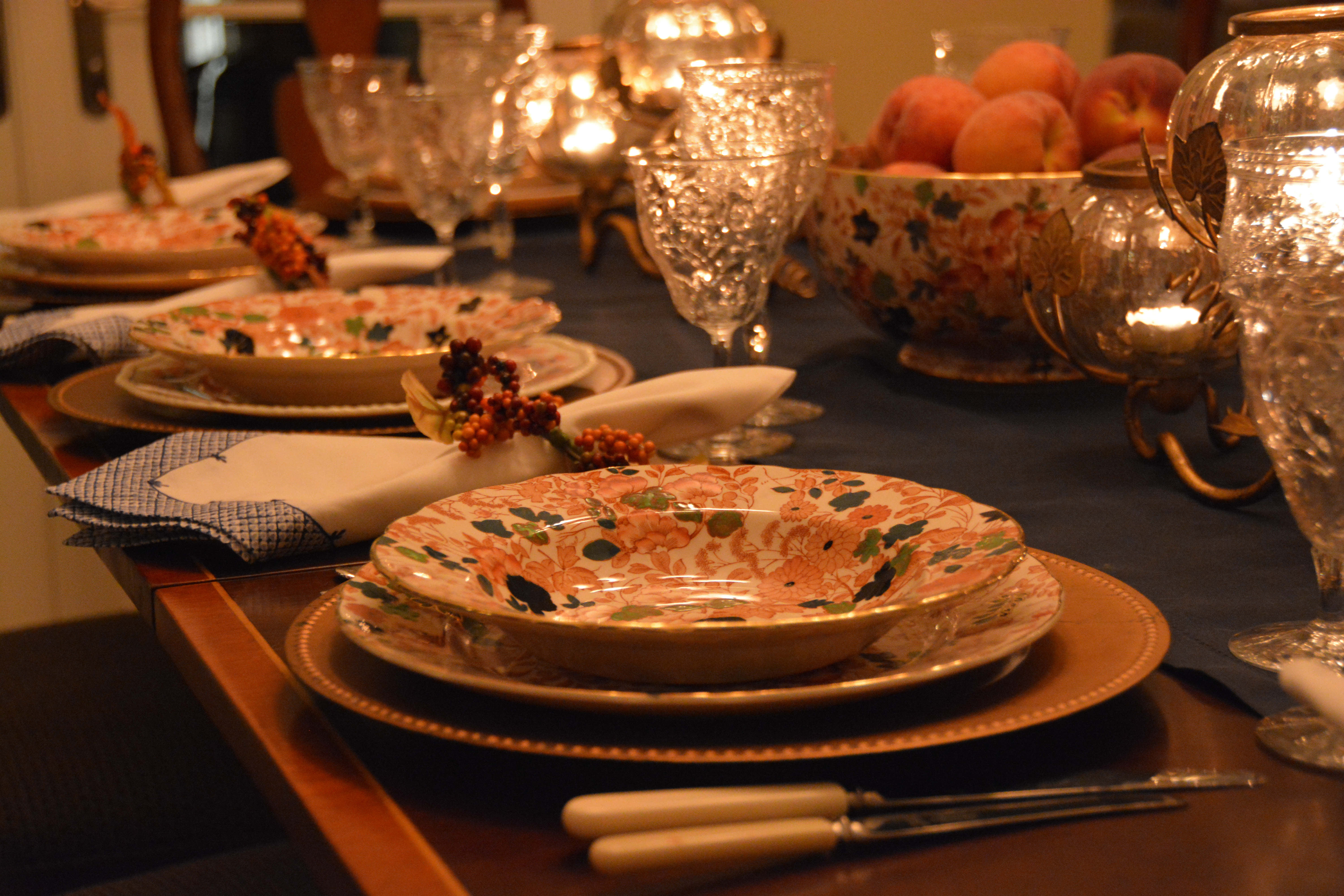
The table just glowed at night.
Amber Luster triple candleholders with clear, pumpkin-shaped globes from Pier 1 continued the autumn theme. (They’re currently on clearance, in case you’re interested.)
I think I’ll get a lot of use out of them. The toned-down antiqued gold is very versatile, and I like the vine detail.
I added a bowl of peaches to the centre of the table, set between the two candleholders.
I was able to get eight soup bowls, but only seven dinner plates. I added one plate in The Berkshire by Royal Doulton to bridge the gap.
It’s similar in colour and shape, and is a worthy substitute, don’t you think? I’m keeping my eye out for another dinner plate in the Bittersweet pattern.
You can’t even tell 🙂
The open salts are from Vintage at Chirp (now Etsy, I believe) .
The flatware is part of a silver and bakelite handled vintage canteen that I picked up many years ago from now-defunct Country Dining Room Antiques.
Thanks for joining me on the tour of the table and the Potteries District. Enjoy the week, everyone.
I’m sharing this post with Between Naps on the Porch.

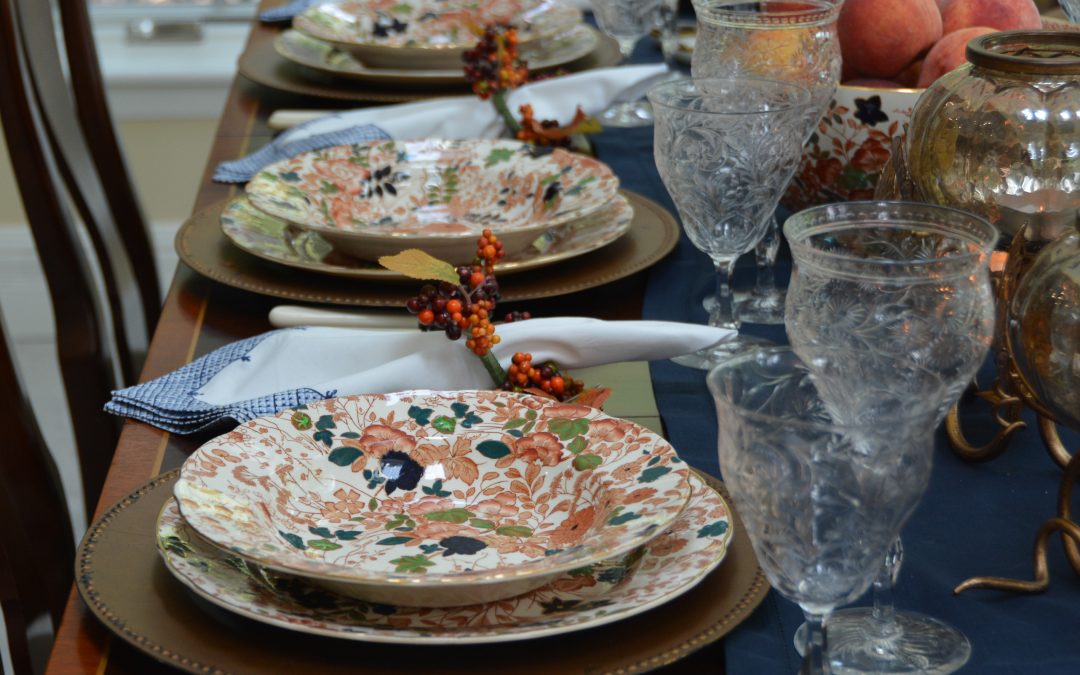
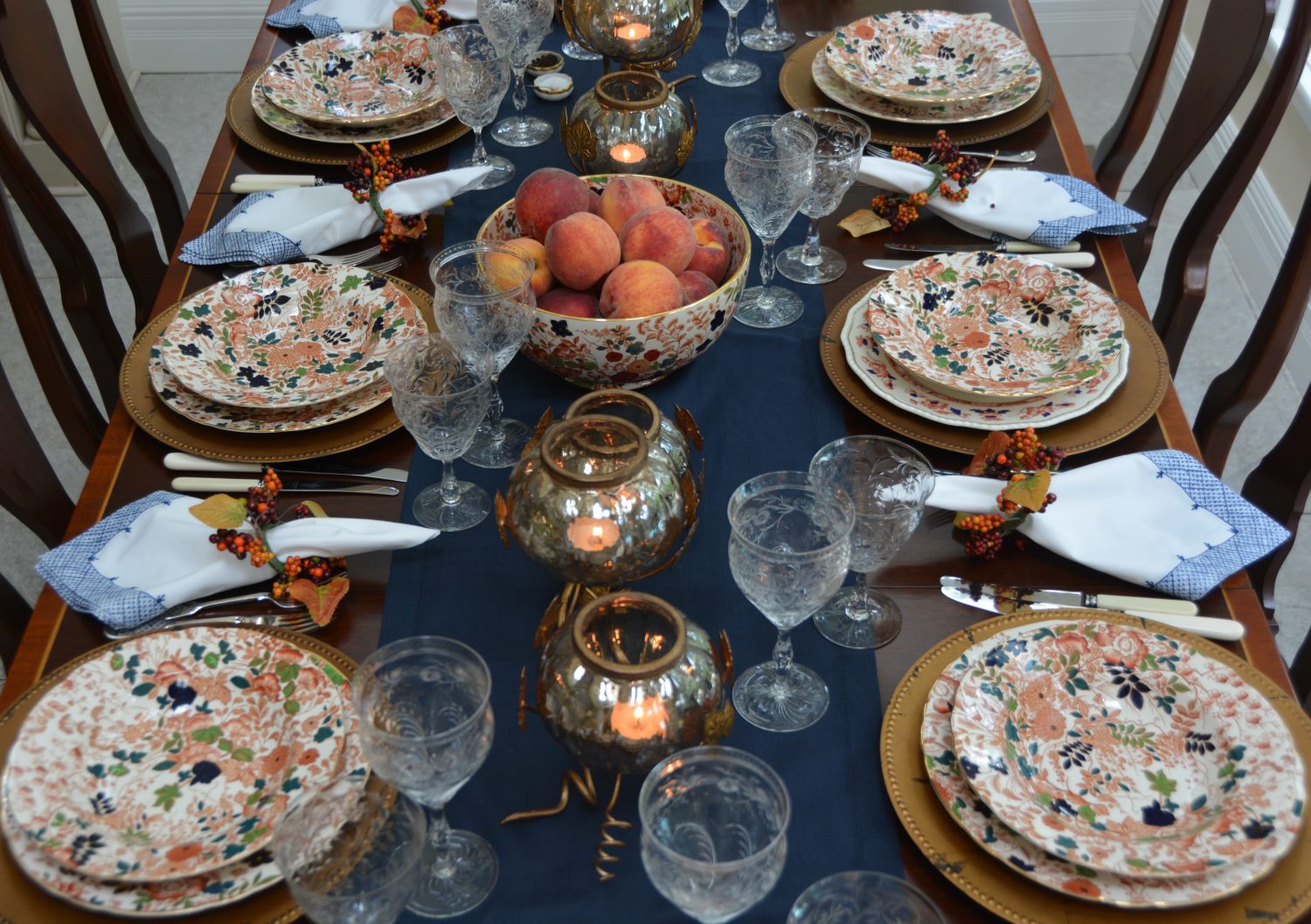


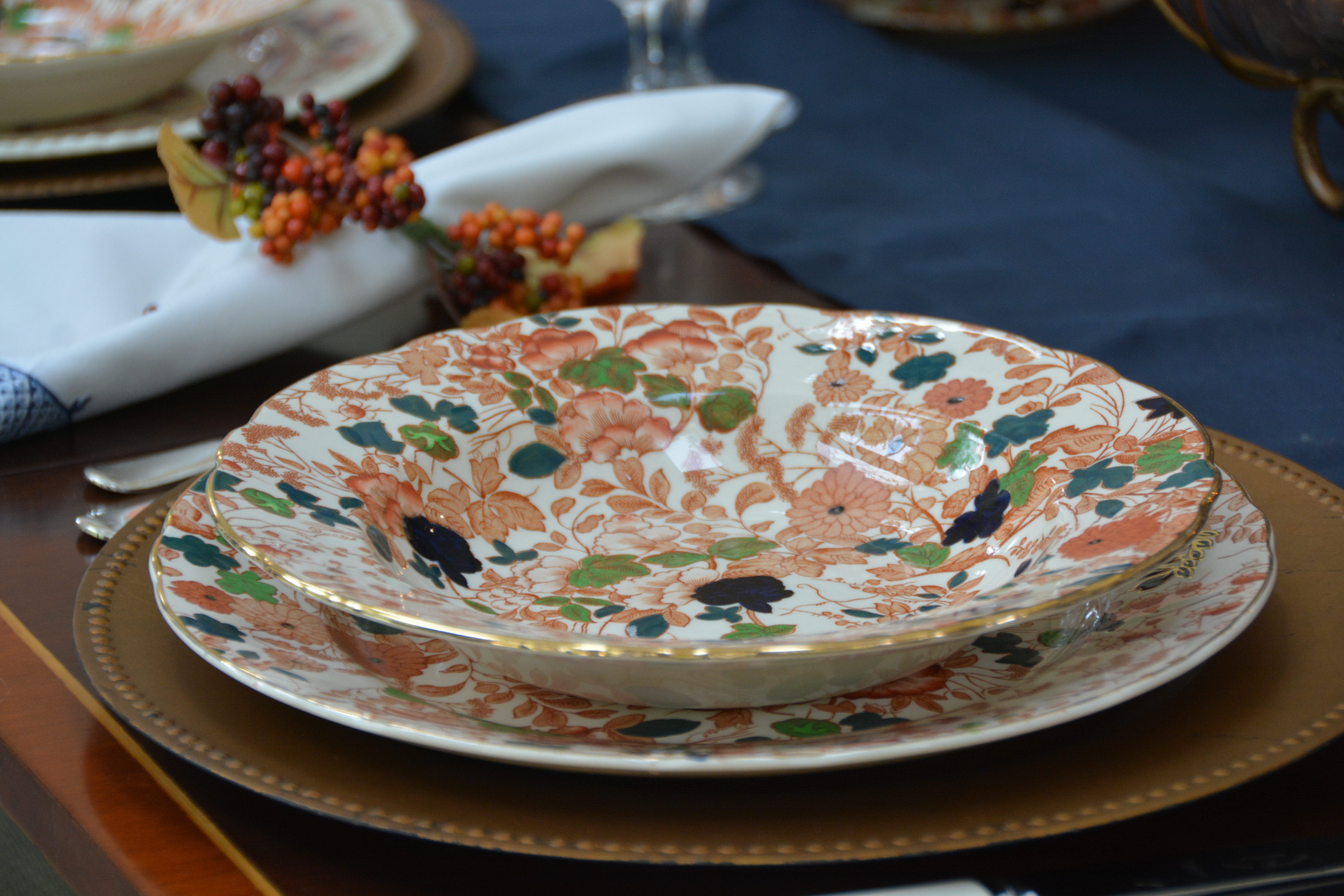

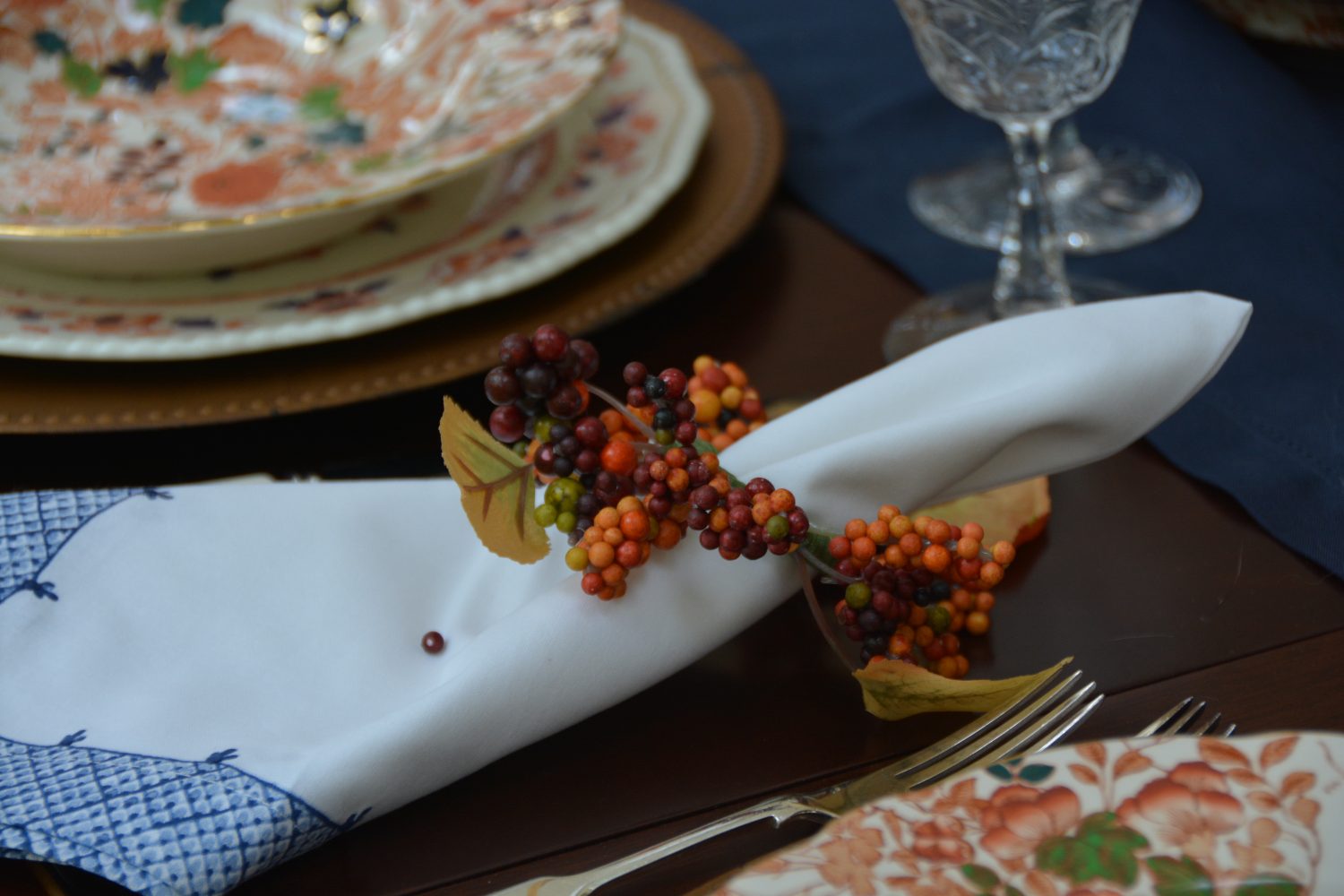

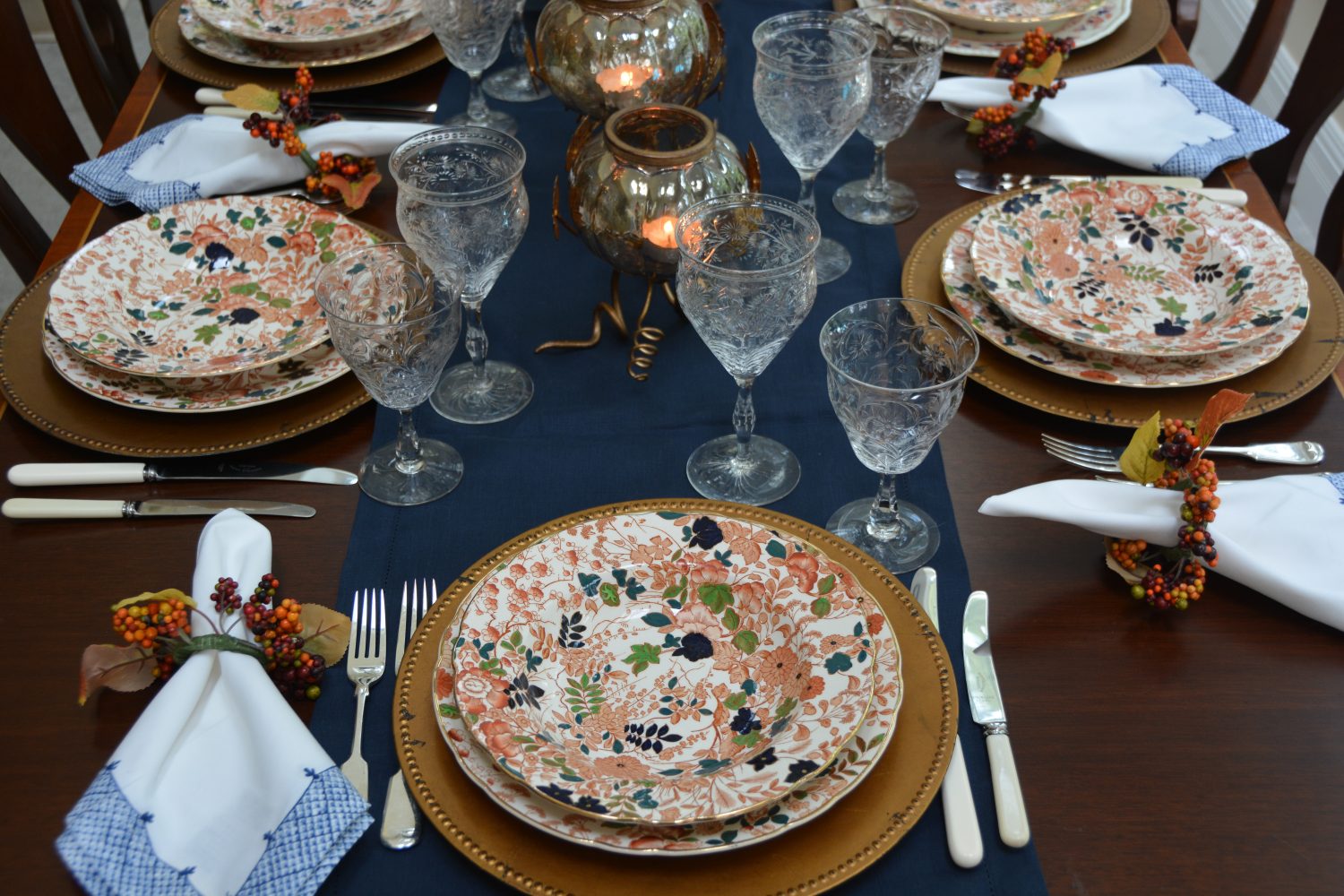






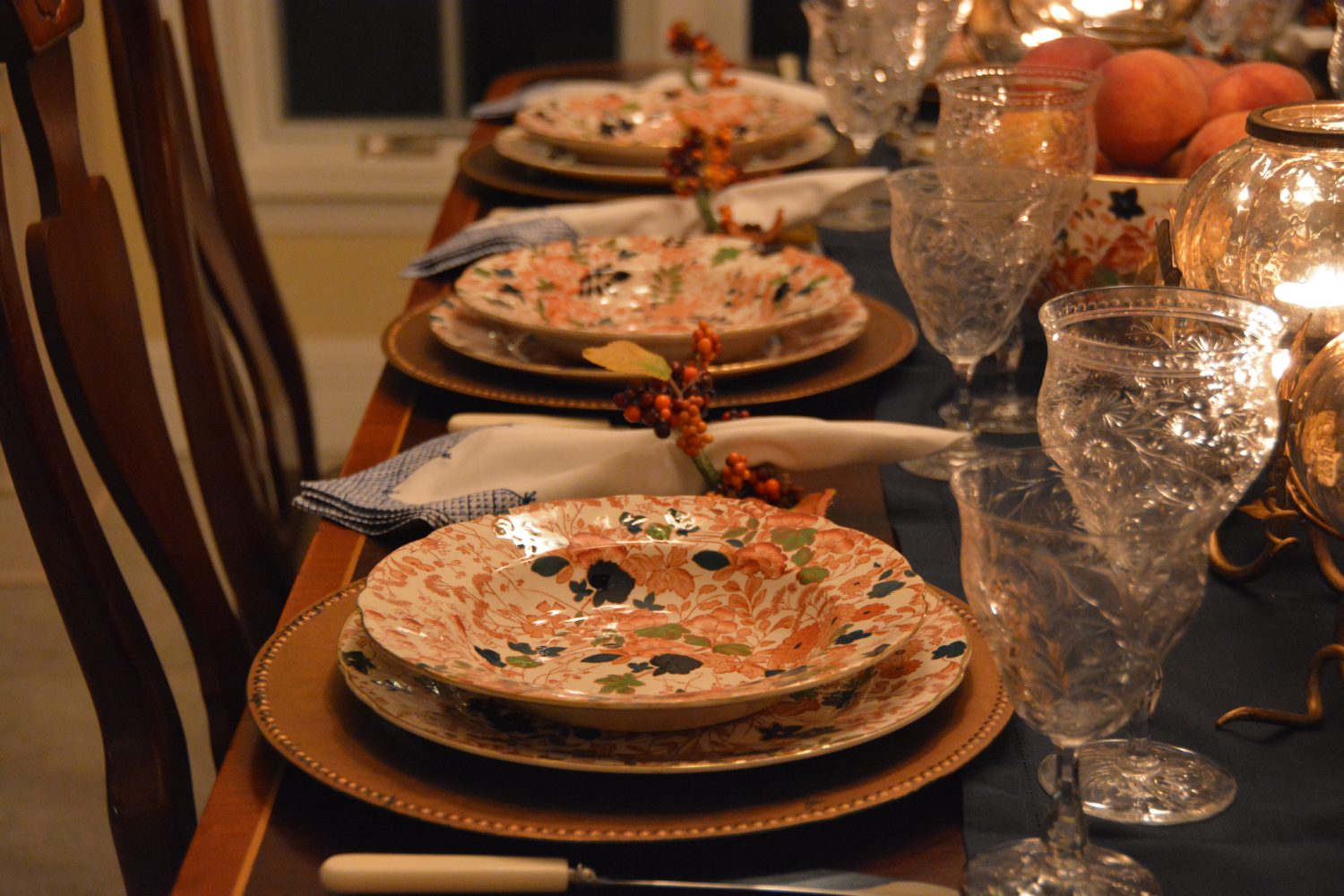





Gorgeous pattern! Pricey and hard to find, too.
It’s certainly both 🙂 eBay helps…
I’m lucky to have one of this dinner plates. I found it in an antiques fair in Bilbao. I love it, its’ so beautiful.
It is truly a lovely pattern!
Loved the blue runner to pick up the blue on the plates. You’re so creative. Love looking at your beautifully put together place settings. Anything you would like me to look for while in the UK? You’d be surprised what u can find in the charity shops!!
And you are incredibly kind! If you see anything that appeals to you, have at it! I trust your taste 🙂 Bill may have a few things to say about lugging stuff home, however!
So beautiful.
Thanks, Cristin! I’m a sucker for that deep orange and navy combination. It’s a classic.
Another lovely table for autumn! I love the touches of blue in the plates, which you highlighted so well with your navy runner. The napkin rings are perfect, too. (I love bittersweet anyway.)
Thanks Joy! I love bittersweet, too. The fake stuff on the napkin rings is much easier to work with than the real thing. 🙂
I have my parents wedding set of bittersweet with many teacups, plates, serving bowls and platters but no bowls. I was jealous to see your bowls.
Lucky you to have so many pieces from your parent’s set! Robin, you might try setting up a search on eBay for the bowls. They’re really good about giving you an alert if anything comes up. I’ve managed to snag quite a few pieces over the years to complete sets.
Oh such a gorgeous table Helen! Thanks for the beautiful inspiration – I love Bittersweet! And thanks for all the great pottery info. I’ve been getting into that for my own Teacup Tuesday posts, and it’s so fascinating! I love the “fanciful” quote too – perfect!
Thanks, Barb. That pattern really won my heart. It’s such a nice combo of chintz and Imari.
Such a rare and glamorous set of china. I’m impressed. I’d feel royal sitting down to dinner!
FYI. I found 5 dinner plates 50% reduced price /imperfect at Replacements.com today and mention it since you have such a nice big set, you might want one. This seller has never disappointed or anything look imperfect that I’ve gotten or gifted.
I’ve bought a lot from Replacements over the years. They are truly stellar. I visited their warehouse via a trip to Charleston and that was before their big expansion. A wonderful story behind it, too!
Absolutely love this, I’ve collected a few pieces. I have a coffee pot, large and small tankard, 2 ginger jars, ashtray,large fruit bowl and a hexagon bowl, cup saucer, milk jug and my very favourite is a lamp. My parents worked in the potteries when they made this pattern.
How marvellous, Debi! I’ve had my eye on a set of the octagonal bowls. Just gorgeous!
Your parents are from Staffordshire? It must be fascinating to hear their stories of what the potteries were like. We did a brief tour of the Gladstone potteries with the bottle ovens.
Does anyone know what this piece is. I know it’s part of the bittersweet collection but nut sure what you would call it. It’s 4.5″ with lid on 3″ with out 2.75 wide no cut outs.
Hi John,
What shape is the piece? Is it perhaps the jam/jelly jar? Here is a link to one on the Replacements website. You might look around there and see if you can spot a similar piece.
Best,
Helen
Helen, very close to the jam & jelly
Jar. The measurements are close. The lid on my jar has no cut out for spoon. Could be a mustard jar. Thanks for your response.john